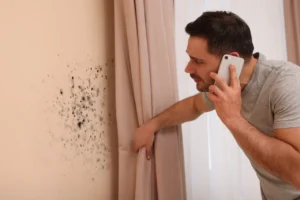Easier Ways To Kill Water Hammer?
by Bill and Kevin Burnett, Inman News
 A previous column on “water hammers” struck a chord with two of our readers.
A previous column on “water hammers” struck a chord with two of our readers.
One accused us of being “on the take” for suggesting that our homeowner might have to open a wall or call a plumber.
Another offered another avenue to explore if there is noise in the pipes. Both suggestions bear repeating.
Our first reader wrote:
“How much did the plumbers pay you to give that answer to the question about hammering pipes?
“I had a severe hammer in my 1923 house, and my wonderful neighbor told me just what to do. The house was built with the air chamber ‘shock absorber’ you described, but it somehow got filled up with water. My neighbor told me to bleed the system — that is, turn off the supply at the sidewalk and open every faucet in the house and garden.
“After all the water drained out, I turned the supply back on, let it run until the faucets all stopped sputtering, and then turned all the faucets off and the water back on. The hammer was gone. That was 15 years ago, and I’ve never had a problem since. No plumbing, no plastering — the whole thing took about 15 minutes.
“I’d suggest anyone with a hammering problem try this before opening a wall or calling a plumber.”
Good suggestion. As we always say, try the simple fix first. Your suggestion is certainly the simplest fix — and it might be the right one. But we have our doubts.
Last week, we answered our reader’s question with a couple of suggestions. One possible solution was to install the “shock absorbers” you are fortunate to have.
We’ve opened a lot of wet walls over the years, and we don’t recall ever finding the supply lines configured with these 12-inch risers that serve as air chambers. This was the “Cadillac” way to do it and, in our experience, it wasn’t done often. We’d be surprised if our reader’s 1906 duplex was so equipped.
The downside of this installation you discovered 15 years ago: Eventually, the air trapped in the riser blends with the water in the system and the air chamber fails. As you point out, when that happens, emptying and recharging the system is the way to fix the hammer.
Our second reader wrote:
“I had a similar problem in a house built in 1899. I first tried the plumber’s-tape fix (securing the pipes to the framing), but could not detect any movement in the pipes while I was working under the house, which surprised me because there are some fairly long pipe runs.
“I finally determined the culprit to be a worn faucet insert that was pounding the seat and inside the faucet itself. Simply replacing the insert portion of the faucet with the correct new part from the hardware store solved the problem.
“Because the letter writer is singling out one faucet (the bathroom), perhaps one of the inserts in that faucet is the source of the sounds he is hearing. As you say, the change in pressure caused by the flushing of the nearby toilet could disrupt the pressure in the system and easily affect a faucet that is being fed by the same supply line.
“Another place I own, a commercial building built in about 1850, had the same problem in one of the units. The plumber who helps me called and said he was going to support the pipes with plumber’s tape. I told him what I had found with the faucet insert — he tried it, and that solved the problem. Makes me think I should have charged him.”
Another good suggestion. In that case it wasn’t the pipes at all, but a broken faucet. We presume the insert the writer was talking about is the seat for the rubber washer. We can only imagine over the years how homeowners (not you) ratcheted down the stem to stop the water flow rather than change the washer.
That may well be the reason the seat failed. For those of you out there with “washered” faucets, set up a regular maintenance schedule to change the washers.
What’s your opinion? Leave your comments below or send a letter to the editor. To contact the writer, click the byline at the top of the story.
Copyright 2008 Bill and Kevin Burnett
See another feature by the Burnetts, Tips for Tiling a Bathroom Wall.
American Apartment Owners Association offers discounts on products and services related to your commercial housing investment including REAL ESTATE FORMS, tenant debt collection, tenant background checks, insurance and financing. Find out more at www.joinaaoa.org.
See more on Real Estate Financing.
To subscribe to our blog, click here.













 Accessibility
Accessibility